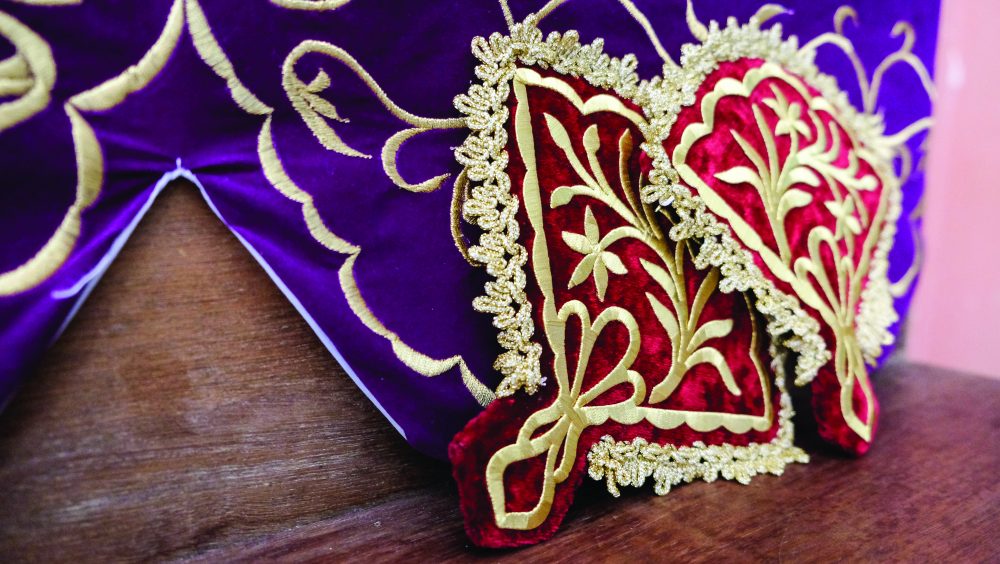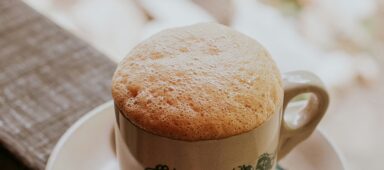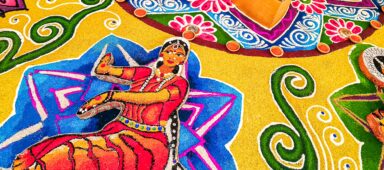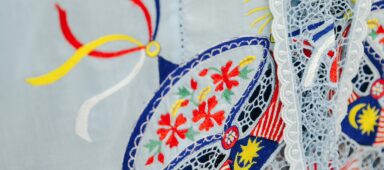Unravel the tradition of ‘tekat emas’, or gold embroidery, at Kuala Kangsar, Perak.
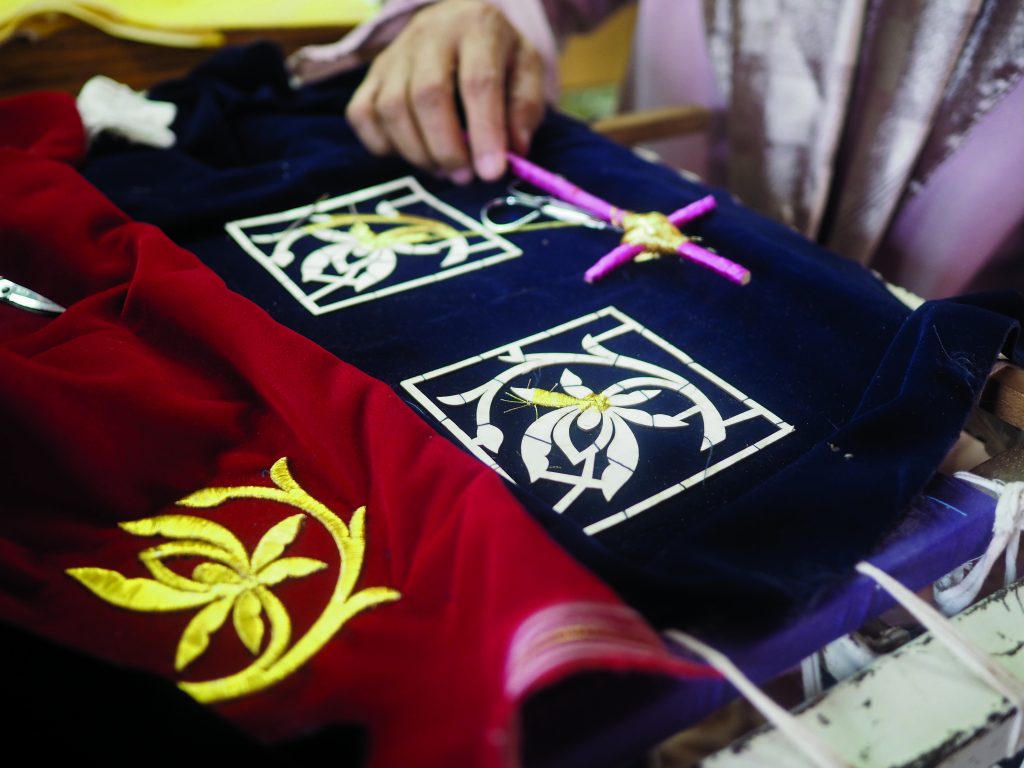
Each time the artist runs the needle through the velvet, she delicately smooths the gold thread at a precise angle. She traces the intricate floral patterns using a cardboard template and hand-held spool. Silky and shiny, every strand must be carefully woven; even the slightest slip can be noticeable. The gold embroidery, or tekat emas, must be perfect to be presented to royalty.
Tekat emas is an unusual skill to master, even among embroiderers. In Malaysia, this craft is a cultural heritage unique to Kuala Kangsar, the royal town of Perak state. It is a glistening artistic representation of the Malay identity.
A Family Of Embroiderers
Mardziah binti Abu Kassin, 50, comes from a long line of embroiderers. “The skill was passed down to me by my mother. I didn’t learn formally, but after a long time of observing her, I was able to do it too,” she says.
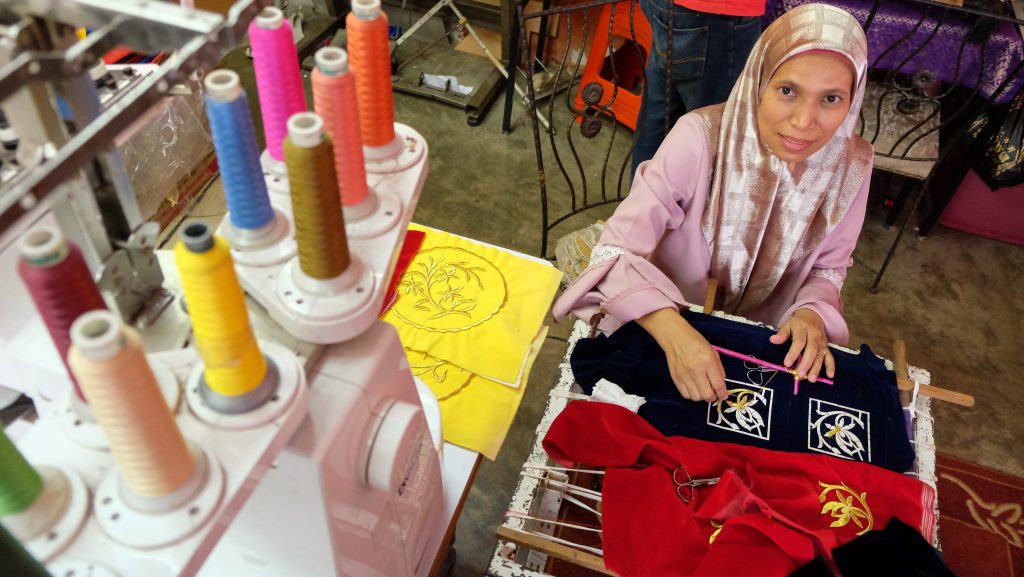
She admits that previously, she did not share her family’s enthusiasm. Mardziah used to sell handicrafts such as cushions and betel leaf holders.
Noticing that many customers asked about gold-thread embroidery, she decided to give it a try. The first item she made on her own was decorative tekat art that can be framed on the wall. From there, her passion grew.
Mardziah is the eighth child in a family of nine children. Two of her older sisters are also skilled in tekat emas, but she is the only one who chose to do it full time.
The craft is predominantly mastered by women, at least in Malaysia. In countries like Saudi Arabia, it is usually practised by male embroiderers.
There are significant differences in the aesthetic designs. “In Saudi Arabia, they often sew Arabic phrases from the Quran. In Aceh, Indonesia, they do crescent moon designs but embellish them with floral patterns. In Malaysia, we have floral motifs, fauna motifs and geometric motifs,” Mardziah explains.
Her own customers tend to request floral patterns such as the chrysanthemum, bougainvillea, frangipani and paddy.
Threaded With Tradition
The history of tekat emas is interwoven with the history of trade. During the 15th century, the embroidery was introduced to the local community by traders from the Middle East. The beauty and finesse of this craftwork naturally made it sought after by members of royalty and nobility.
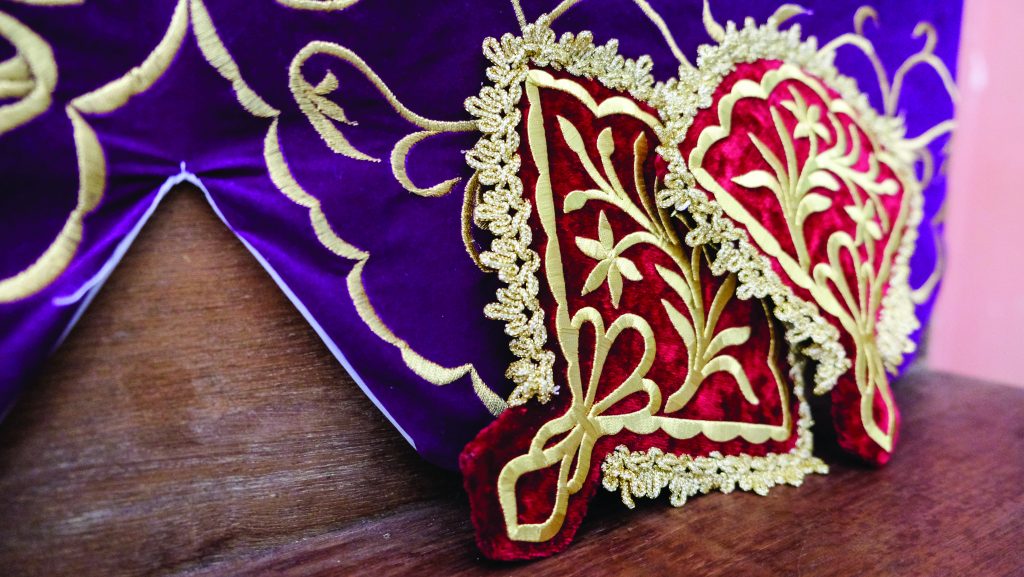
The embroidery would usually be used on ceremonial items for weddings, engagements, births and other important events. Within the royal family, it can be used to decorate clothes and household items, such as curtains, cushions, table cloths and bedsheets.
Mardziah’s family has been sewing for the royal family of Perak since the 1920s. In 2007, she and 12 other artists had the opportunity to prepare the gold-thread embroidery for the coronation of the 13th King, Tuanku Mizan Zainal Abidin. It took them three months to complete everything by hand.
Beyond Malaysian shores, this art has its share of cultural appreciation. Last year, Mardziah’s team was commissioned to make several traditional household items that are now exhibited at a museum in Busan, South Korea.
Although many embroiderers rely on sewing machines to increase production these days, Mardziah still prefers the traditional way of embroidering her masterpieces. First, she stretches the fabric on a wooden loom, before fixing a cardboard cut-out with the desired motifs on it.
Using several needlework techniques, she secures the gold threads onto the fabric, ensuring the cut-out is completely covered by the threads to give it a finer finish. Complex designs can take Mardziah up to two weeks to complete.
Per tradition, Mardziah only uses imported materials. According to her, the gold threads in Malaysia do not have the same quality and lustre as the kinds in other countries. She gets her thread supply from Germany, while velvet pieces are brought in from England, Korea and Japan.
When done with trained hands, an eye for detail and lots of patience, the embroidery comes out neat and elegant. The gold threads gleam in vivid contrast against the bright fabric, typically fashioned in dark colours like maroon, navy blue or royal purple. When you run your fingers over it, the fine thread work should feel as smooth as silk.
Training The New Generation
Times have changed and tekat emas is no longer reserved for the rich. “Since the 1960s, it has become more commercialised. Many people use it during weddings, such as for handbags and shoes,” she says.
To Mardziah, this shift opens doors for budding female entrepreneurs. She now owns a small shop in Kuala Kangsar that has been in operation since 1997. There are 13 artists working for her, six of whom are full-time staff. They can sell small souvenirs for up to RM200 apiece, while wedding packages can cost between RM2,200 to RM6,000, depending on the selected designs.
The business poses challenges. The materials used in tekat emas are expensive and the costs are increasing. Mardziah has also made changes to quicken the process. Rather than carve out the template on her own, she uses a cutter.
Nevertheless, Mardziah estimates there are around 30 to 40 tekat embroiderers across Kuala Kangsar. “Right now, we also train tekat students. Many of them have become good at it. Even my children who are still in school know how to do it,” says the mother of six.
To raise awareness of the art, she has started providing demonstrations and workshops to Kuala Kangsar’s visitors. They won’t have enough time to finish embroidering the whole handicraft within a few hours, but it lets them understand the value of this heritage.
“I hope tekat emas, especially hand-sewn tekat emas, can be preserved so that the craft will not ebb away with time. If more people are trained in it, then the craft will not disappear – it will live.”
For information on demonstration and classes, book a session with Mardziah on LokaLocal.
